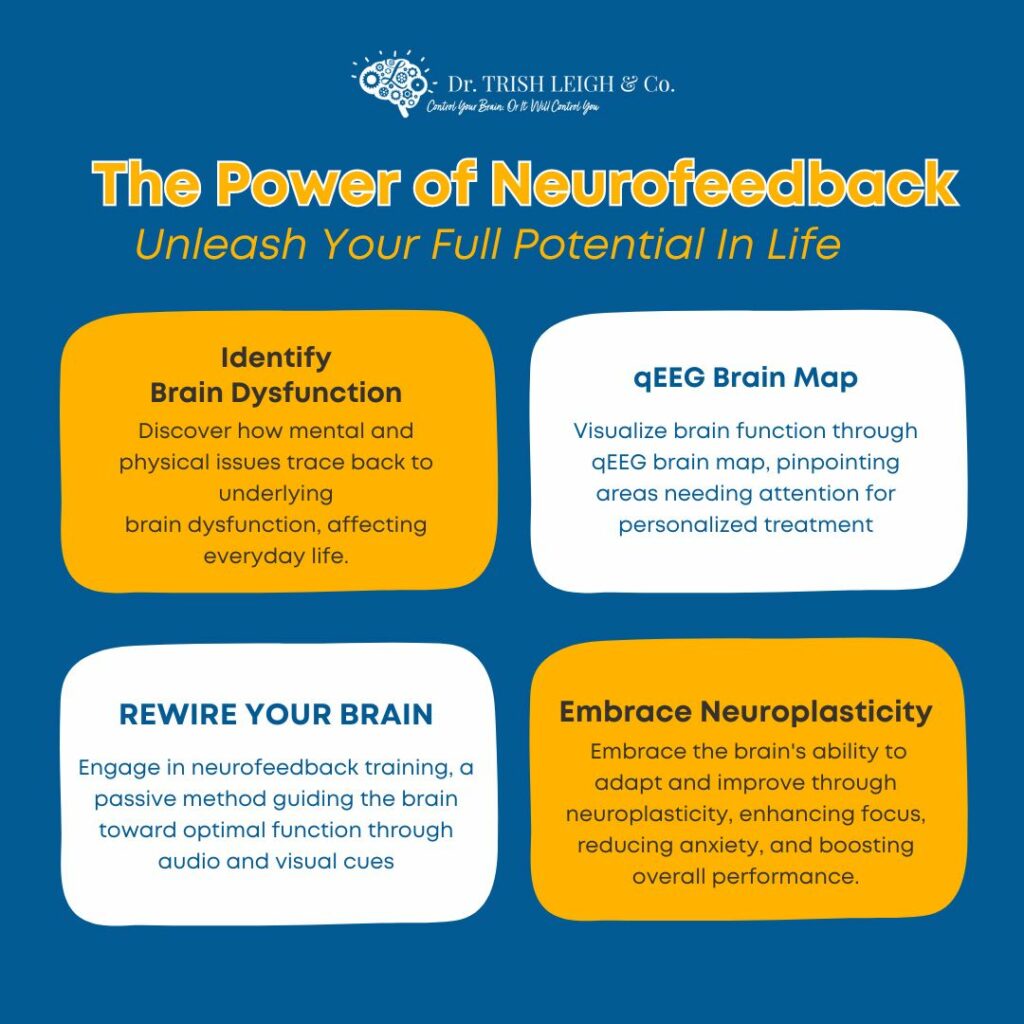Have you ever felt overwhelmed by anxiety, struggled to focus, or faced challenges in your relationships? You’re not alone! These issues often stem from underlying brain dysfunction. But what if there was a way to train your brain and improve its performance?
Welcome to the mind-bending world of neurofeedback brain training! This cutting-edge technique, as explained by Dr. Trish Leigh, can revolutionize your mental and physical health by tackling the root causes of brain dysfunction.
The Brain as the Control Center and the Benefits of Neurofeedback

Our brains are remarkable control centers, orchestrating everything from our thoughts and emotions to bodily functions. However, these intricate neural networks sometimes experience glitches or imbalances, leading to various health issues. Neurofeedback brain training aims to recalibrate these circuits, promoting optimal brain function.
Brain Dysfunction: The Root Cause of Many Issues
Dr. Leigh emphasizes that many mental and physical health problems we experience are rooted in brain dysfunction. She explains that certain brain areas aren’t using electrical energy in the optimal pattern. This disrupts the brain’s ability to seamlessly shift between different brainwave speeds needed for various daily activities.
The qEEG Brain Map: Unmasking Your Brain’s Activity
Imagine a roadmap to optimal brain health! That’s what a qEEG brain map provides. This tool uses a painless technique called electroencephalography (EEG) to measure your brain’s electrical activity. The resulting map reveals areas of dysfunction and their severity.
The map will visually represent your brainwave activity, ideally showing a predominance of green, signifying optimal functioning.
Green Zone Brainwaves: The Key to Reaping the Benefits of Neurofeedback
A healthy brain seamlessly shifts between different brainwave speeds like gears in an automatic transmission. These speeds correspond to various states:
- Grogginess: Upon waking, you might feel groggy, but a cup of coffee jumpstarts your brain into a calm and alert state.
- Calm Focus: This state lets you concentrate intensely on work or problem-solving.
- Calm Chill: Enjoying a relaxed lunch with friends requires a different brainwave pattern than focusing on work.
- Pre-Sleep Relaxation: As the day winds down, your brain transitions towards restful sleep.
Stuck Gears: When Your Brain Can’t Shift
If you struggle with anxiety, attention issues, or screen addiction, your brain might be stuck in a “manual transmission” mode, metaphorically speaking. It gets locked in the “wired and tired” gear, leading to anxiety, difficulty focusing, and a constant pull towards screens for a temporary dopamine fix. This screen time, in turn, reinforces the dysfunctional brain pattern, creating a vicious cycle.
Coffee Clutch Time: Hyperfocus Mode
Imagine that pivotal moment at work – coffee in hand, brain alert, and ready to tackle complex tasks. Neurofeedback helps you achieve that hyperfocused state, where your brain effortlessly zeroes in on challenges.
So, whether you’re combating anxiety, seeking peak performance, or addressing addiction, remember: Neurofeedback isn’t magic; it’s science optimizing your brain’s symphony! 🧠✨
Ready to dive deeper into the world of neurofeedback?


